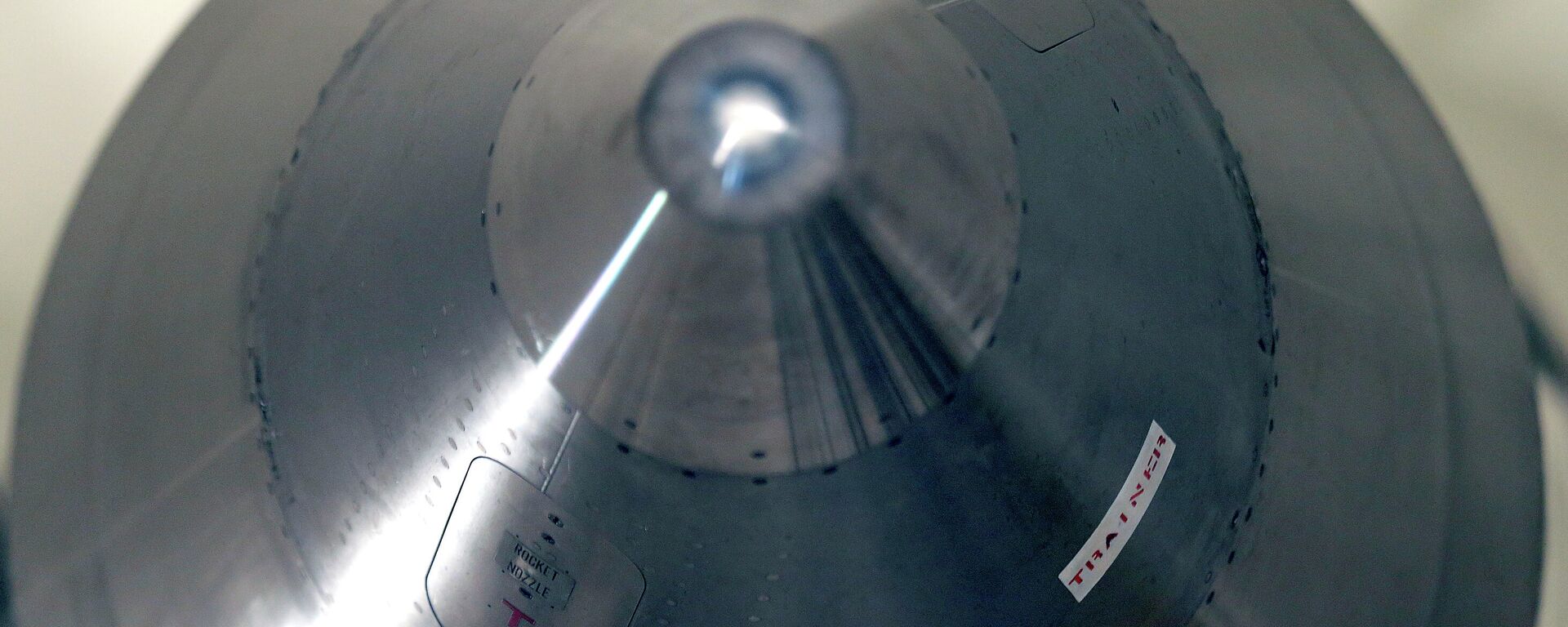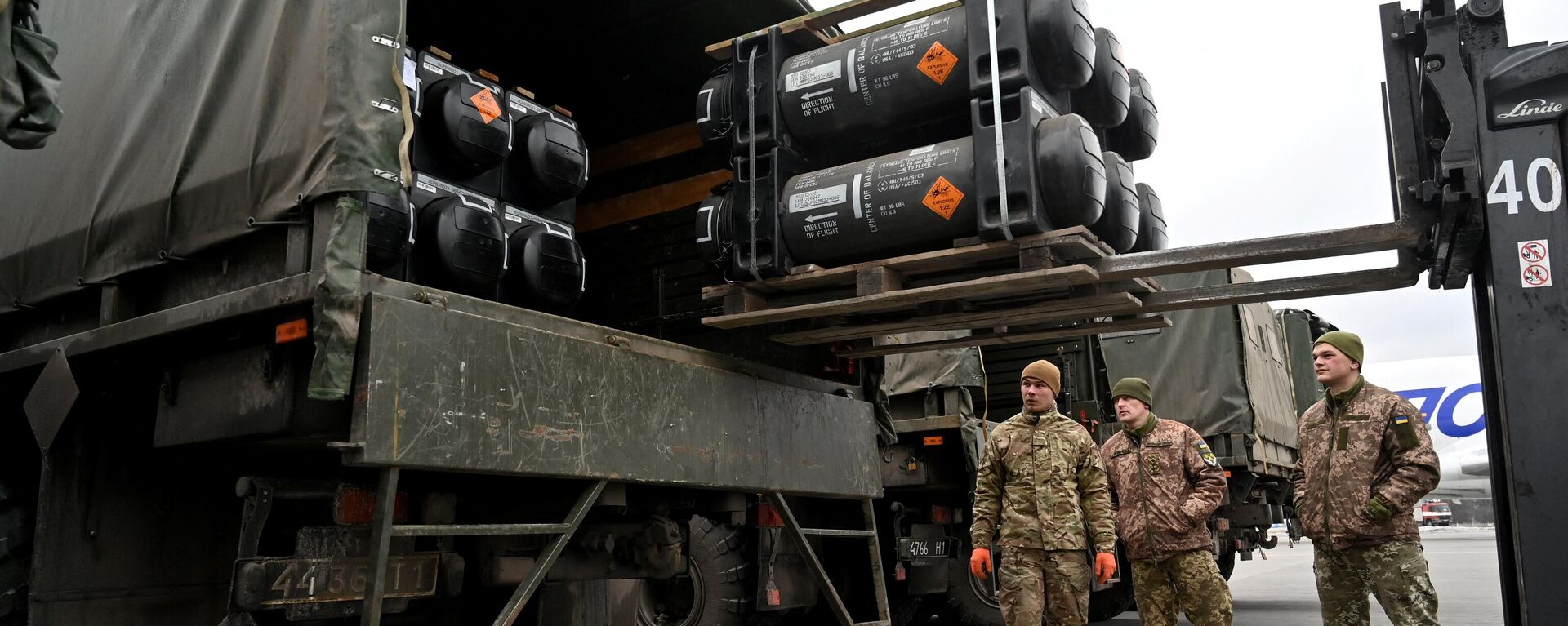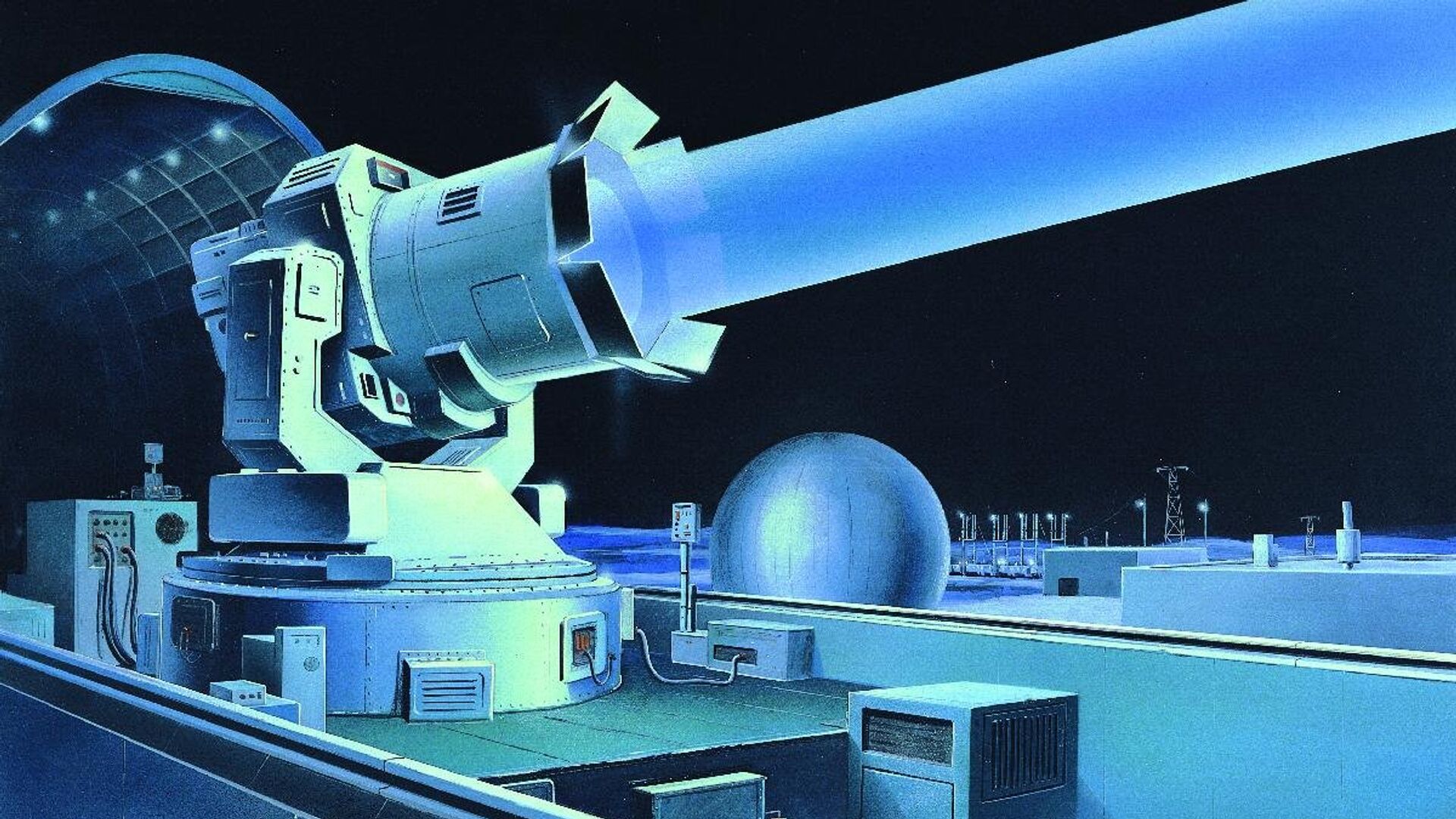https://sputnikglobe.com/20230912/what-does-putin-mean-by-weapons-based-on-new-physical-principles-1113316548.html
What Does Putin Mean by Weapons Based on 'New Physical Principles'?
What Does Putin Mean by Weapons Based on 'New Physical Principles'?
Sputnik International
Russia last proved its penchant for innovation in breakthrough weapons designs in 2018, unveiling a series of cutting-edge strategic systems. Fast-forward five years, and the Russian president has again mentioned work on mysterious new arms based on ‘new physical principles’. Sputnik turned to top Russian and US military experts for comment.
2023-09-12T16:31+0000
2023-09-12T16:31+0000
2023-09-14T10:20+0000
military
russia
vladimir putin
karen kwiatkowski
viktor murakhovsky
ukraine
nato
all-russian scientific research institute of experimental physics
nobel prize
laser
https://cdn1.img.sputnikglobe.com/img/105561/23/1055612329_0:144:1201:819_1920x0_80_0_0_35bbbf161bd5da07d47259164225805c.jpg
Russia's defense sector is working on state-of-the-art weapons based on "new physical principles," President Vladimir Putin has revealed.Putin did not elaborate, leaving media and military observers scrambling in a search for more information.The Russian Defense Ministry’s official online encyclopedia defines "weapons based on new physical principles" as "new types of arms whose destructive effect is based on processes and phenomena which have not previously been used for military purposes."As of the early 21st century, these weapons are said to include:What Types of Weapons Based on New Physical Principles is Russia Working on?For example, as a party to the Biological Weapons Convention, Russia has set a blanket ban on the creation of genetic weapons. At the same time, the Russian military has revealed in great detail the extent of illegal US research in this direction at biolabs in Ukraine and other countries around the world under the guise of anti-pandemic preparation and other civilian research.As the possessor of the world’s largest nuclear arsenal, Moscow has also eschewed the creation of radiological weapons, or "dirty bombs," citing the danger of their development and possible use by terrorists or enemy powers, including for false flag attacks against Russia.Veteran Russian military observer Viktor Murakhovsky told Sputnik that President Putin’s comments on weapons based on "new physical principles" are most likely a reference to lasers and other high-energy physics-based weapons.As in the field of hypersonic missiles, in which Russia got a head start thanks to a solid foundation of research going back to at least the 1970s, Russia's modern research in laser weaponry also dates back to fundamental studies carried out by brilliant 20th century scientists, Murakhovsky said, pointing to the Nobel Prize-winning work of physicists including Alexander Prokhorov and Anatoly Vlasov.In 2016, Murakovsky recalled, then Prime Minister Dmitry Medvedev got a demonstration of an anti-drone laser weapon at the Institute of Laser Physics, after which the state gave the go-ahead on the technology’s speedy introduction into the military.At present, Murakhovsky believes, the NATO-proxy war against Russia in Ukraine makes anti-drone lasers the most urgently-needed kind of weapon based on new physical principles. Here, he said, a number of teething issues, including lasers' performance in fog, rain and cloud cover, and the tremendous amount of power they require to operate, have prevented their widespread adoption and deployment.US' Aggressive Posture as Primary MotivatorAsked about the factors pushing Russia's work on fundamentally new kinds of armaments, retired US Air Force ieutenant colonel and former Pentagon analyst-turned whistleblower Karen Kwiatkowski told Sputnik that the US and NATO's "containment" doctrine, used "to justify its defense spending and maintenance of dollar dominance in the world for a good 40 years after this concept had become hollow and meaningless," is most directly responsible.It’s a dialectical process, in the observer's view.“When the US brings its Air Force, Army and Navy close to a country’s shores, and when it targets all parts of a country geographically, as in Asia, Russia, and the Mideast, those countries react accordingly. Those that are economically or politically weaker and non-nuclear choose terrorism and sometimes, compliance; those that are mid-sized will group together with others; and the largest countries, and those with the most to lose, plan strategically to counter the known threat,” Kwiatkowski said.Ultimately, Kwiatkowski believes that the countries that will set the trend in the creation of new advanced defense systems of the future will be those that will be "open to all kinds of technology" are willing "to design new weapons and improve on the old," and which have "a well-educated and scientifically-minded country."
https://sputnikglobe.com/20230412/us-working-on-universal-genetically-engineered-bioweapon-russian-parliamentary-investigation-1109381193.html
https://sputnikglobe.com/20181205/peresvet-combat-laser-system-1070411676.html
https://sputnikglobe.com/20230911/whos-to-blame-for-ukraine-crisis-and-rising-global-nuclear-tensions-1113290665.html
https://sputnikglobe.com/20230902/us-laying-groundwork-for-defeats-in-two-wars-of-choice-against-russia--china-1113067940.html
russia
ukraine
Sputnik International
feedback@sputniknews.com
+74956456601
MIA „Rosiya Segodnya“
2023
News
en_EN
Sputnik International
feedback@sputniknews.com
+74956456601
MIA „Rosiya Segodnya“
Sputnik International
feedback@sputniknews.com
+74956456601
MIA „Rosiya Segodnya“
russia, new physical principles, work, arms, weapons, weaponry, defense, offense, vladimir putin
russia, new physical principles, work, arms, weapons, weaponry, defense, offense, vladimir putin
What Does Putin Mean by Weapons Based on 'New Physical Principles'?
Longread
Russia last proved its penchant for innovation in breakthrough weapons designs in 2018, unveiling a series of cutting-edge strategic systems. Fast-forward five years, and the Russian president has again mentioned work on mysterious new arms based on “new physical principles.” Sputnik turned to top Russian and US military experts for comment.
Russia's defense sector is working on state-of-the-art weapons based on "new physical principles," President Vladimir Putin has revealed.
"If one looks into the security sphere, weapons based on new physical principles will ensure the security of any country in the near historical perspective. We understand this very well and are working on it," Putin said in a wide-ranging speech at the Eastern Economic Forum on Tuesday.
Putin did not elaborate, leaving media and military observers scrambling in a search for more information.
The Russian Defense Ministry’s official online encyclopedia
defines "weapons based on new physical principles" as
"new types of arms whose destructive effect is based on processes and phenomena which have not previously been used for military purposes."As of the early 21st century, these weapons are said to include:
Directed energy weapons (laser, accelerator, microwave and infrasonic-based arms designed to destroy or disable enemy manpower, equipment, or hardened facilities and infrastructure). “All types of directed energy weapons are practically inertia-free, and with the exception of infrasonic weapons, are instantaneous […] The greatest successes” in this direction “have been achieved in improving laser weapons,” according to the MoD.
Electromagnetic weapons (ultra-high frequency and laser-based), whose destructive properties are achieved through the use of a "powerful, usually pulsed stream of electromagnetic coherent optical radiation [featured in some types of lasers, ed.], or incoherent optical radiation."
Non-lethal weapons, designed to disable weapons, equipment, materiel, and personnel without inflicting irreparable losses on the latter. The Russian military divides these into anti-personnel, anti-equipment/materiel, and combined anti-personnel/anti-equipment/anti-materiel systems. These include various weapons designed to replace existing tools used by domestic security services, such as teargas, rubber bullets, psychotropic devices, infrasonic weapons, and electronic suppression, as well as military-grade biological and chemical agents which can decompose or otherwise render useless fuels, insulation and rubber products, and ultra-high frequency systems meant to disable radio-electronic components of enemy weapons and equipment.
Geophysical weapons (seismic, climate, ozone, environmental), collectively defined by the MoD as "means to deliberately influence the environment to use the forces of nature for military purposes." These hypothetical weapons are designed to act against the solid, liquid, and gaseous properties of the planet and its atmosphere, and can include using powerful explosives to cause earthquakes, volcanic eruptions, flooding, and other catastrophes, as well as altering the weather or climate in certain parts of the planet, resulting in droughts, floods, storms, etc. Ozone weapons are designed to create holes in the ozone layer, causing widespread damage using ultraviolet radiation from space across vast geographic areas. Finally, environmental weapons are categorized as those designed to target forests, crops, water, air, or soil resources, possibly through the use of chemical or biological agents.
Radiological weapons include arms whose destructive effect "is based on the use of radioactive substances capable of poisoning manpower with ionizing radiation without a nuclear explosion," with radiation-spewing materials obtained from the leftovers of nuclear fuel, or by exposing chemical elements to neutron fluxes to produce radioactive isotopes. These arms can be fitted inside shells, air-droppable bombs, missile warheads, and other conventional munitions, and are designed to contaminate the environment for tens if not hundreds of years.
Finally,
genetic weapons are defined as "a type of weapon capable of damaging the genetic (hereditary) apparatus of human beings," including through the use of viruses with mutagenic properties, as well as "mutations derived from natural sources by chemical synthesis or biotechnological methods, to cause damage or changes to DNA. This type of prospective weaponry is considered particularly dangerous in light of "the unpredictability of the consequences" of their use, in the Russian military’s estimation.
What Types of Weapons Based on New Physical Principles is Russia Working on?
Russia's military, the state, and military-affiliated research institutes have been mostly tight-lipped about the types of weapons based on new physical principles the country is developing, but have nevertheless dropped hints about their priorities and concerns.
For example, as a party to the Biological Weapons Convention,
Russia has set a blanket ban on the creation of genetic weapons. At the same time, the Russian military has revealed in great detail the extent of illegal US research in this direction at
biolabs in Ukraine and other countries around the world under the guise of anti-pandemic preparation and other civilian research.
As the possessor of the world’s largest nuclear arsenal,
Moscow has also eschewed the creation of radiological weapons, or "dirty bombs," citing the danger of their development and possible use by terrorists or enemy powers, including for false flag attacks against Russia.
Veteran Russian military observer Viktor Murakhovsky told Sputnik that President Putin’s comments on weapons based on "new physical principles" are most likely a reference to lasers and other high-energy physics-based weapons.
As in the field of hypersonic missiles, in which Russia
got a head start thanks to a solid foundation of research going back to at least the 1970s, Russia's modern research in laser weaponry also dates back to fundamental studies carried out by brilliant 20th century scientists, Murakhovsky said, pointing to the Nobel Prize-winning work of physicists including Alexander Prokhorov and Anatoly Vlasov.
"We have been working on laser weapons for quite a long time, since the 1970s," the observer said. "Today, Sergey Grigorievich Garanin has been appointed general designer of laser systems. He's working at the All-Russian Scientific Research Institute of Experimental Physics, and currently leading the development of two projects, including a laser complex, and a whole complex of systems designed to ensure [national] security."
In 2016, Murakovsky recalled, then Prime Minister Dmitry Medvedev got a demonstration of an anti-drone laser weapon at the Institute of Laser Physics, after which the state gave the go-ahead on the technology’s speedy introduction into the military.
"Amongst other things, the Peresvet laser installation was created, designed to blind enemy spy satellites in areas where our mobile ballistic missiles are located…A second laser-based system was designed to destroy small drones. Today, elsewhere in the world, including in the US and China, laser systems like Astra Gemini are being used intensively on some ships. But so far we have not seen any clear demonstration of such systems," Murakhovsky said.

5 December 2018, 13:19 GMT
At present, Murakhovsky believes, the NATO-proxy war against Russia in Ukraine makes anti-drone lasers the most urgently-needed kind of weapon based on new physical principles. Here, he said, a number of teething issues, including lasers' performance in fog, rain and cloud cover, and the tremendous amount of power they require to operate, have prevented their widespread adoption and deployment.
"The advantage of laser weapons is clear: they instantly destroy their target. But the disadvantages, especially in field applications, are very great. It’s necessary, in effect, to build a separate electrical generator for ground-based systems…So the president was talking about upcoming developments. We will watch, and the entire Western world will also be watching," the expert summed up.
US' Aggressive Posture as Primary Motivator
Asked about the factors pushing Russia's work on fundamentally new kinds of armaments, retired US Air Force ieutenant colonel and former Pentagon analyst-turned whistleblower Karen Kwiatkowski told Sputnik that the US and NATO's "containment" doctrine, used "to justify its defense spending and maintenance of dollar dominance in the world for a good 40 years after this concept had become hollow and meaningless," is most directly responsible.
"American military expansion, and more specifically, the US government’s struggle to maintain dollar dominance and global energy control, has caused the rest of the world to think defensively, develop both military and economic strategies to counter US force and hegemony," Kwiatkowski said.

11 September 2023, 18:27 GMT
It’s a dialectical process, in the observer's view.
“When the US brings its Air Force, Army and Navy close to a country’s shores, and when it targets all parts of a country geographically, as in Asia, Russia, and the Mideast, those countries react accordingly. Those that are economically or politically weaker and non-nuclear choose terrorism and sometimes, compliance; those that are mid-sized will group together with others; and the largest countries, and those with the most to lose, plan strategically to counter the known threat,” Kwiatkowski said.
"The US military does not and is not capable of defending the United States proper, nor can it well defend its many bases around the world…American politicians confuse offense and hegemony with defense, and this vulnerability has shaped the defensive and offensive actions of [areas] of the world that the US considers its enemies and threats," the observer added.
Ultimately, Kwiatkowski believes that the countries that will set the trend in the creation of new advanced defense systems of the future will be those that will be "open to all kinds of technology" are willing "to design new weapons and improve on the old," and which have "a well-educated and scientifically-minded country."

2 September 2023, 08:20 GMT








